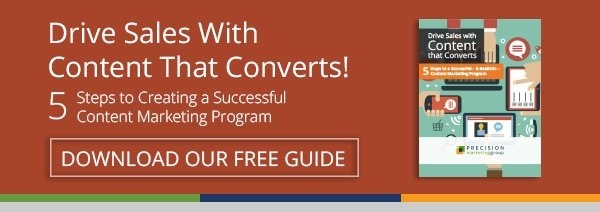Brand awareness—like the term suggests—can be defined as the familiarity your target market has with your brand (or business). If your ideal buyers don't know you exist, it’s going to be pretty difficult for them to purchase your products or services, right?
Many core marketing elements contribute to building up a company's brand – a good business name, a sharp logo, a clever tagline, the website, social media channels, etc. These are all necessary to be in business and start sharing your story. But, of course, these branded elements simply create a foundation. In industries crowded with competitors, it's necessary for many companies to plan and launch brand awareness campaigns that elevate their business and help them to retain and grow market share.
If you happen to be new to creating a brand awareness strategy or you're looking for some inspiration and ideas, this article published by Taboola is a great resource. Some common strategies include forging complementary co-marketing partnerships, premium content promotion, influencer marketing, paid advertising, and even savvy use of hashtags.
What's more, brand awareness campaigns also support increases in lead conversions. If consumers have a strong affinity for your brand or if they're even just familiar with it, they are much more likely to respond to other marketing efforts, like ads or email marketing. One example of this is cited in the same brand awareness article noted above. Avocados from Mexico found a 14% increase in lead generation after implementing a brand awareness campaign!

Many marketing leaders feel strongly about the importance of brand awareness. Larry Kim, the founder of Wordstream and Mobile Monkey, shared these slides on a recent webinar and discussed how brand affinity drastically impacts click-through and conversion rates. Considering the money spent by most companies in the paid advertising space, this lift could be particularly valuable.


Metrics and Tools for Tracking Brand Awareness
Despite the power brand awareness initiatives have on overall business performance, one of the questions that stumps many marketers is: how do you measure the ROI of your brand awareness campaign? (The cute cartoon below illustrates this common struggle...)

Whether you're leveraging a specific tactic to get your brand name out there or you want to track brand awareness consistently along with other KPIs, the following metrics will help you analyze and report on your success:
1. Search Impressions – Available via Google Search Console, search impressions tell you how often your website is visible in Google's search results. Depending on your site structure, you may be able to narrow this down further by viewing your blog or other subdomains separately.
2. Paid Search Impressions – This is almost the same thing as the metric described above, except this is visibility via paid search results (and you can find this data in Google AdWords).
3. Direct Website Sessions – Obtainable via Google Analytics, HubSpot or other website analytics, this data shows how often your site is visited via direct traffic. An increase in direct traffic, which refers to website visitors that arrive on your site as a result of typing in the specific URL or clicking on their browser bookmark, can be a good indication that your brand awareness efforts are working. (Note: if you have a customer login form on your site, it’s a good idea to filter this out for a more accurate measurement.)
4. Advertising Banner Ad Sessions – Another metric that can be found in Google Analytics, HubSpot or other website analytics, “sessions by campaign” will help you tie website visits to a specific advertising campaign.
5. Social Followers – Trackable via individual social channels, as well as other analytics tools, a growth in your social media following is a good indication of a boost in brand awareness.
6. Social Impressions – Social impressions allow you to see how much visibility, or impressions, your social media posts are receiving. If you start seeing this increasing, you can make assumptions about the potential awareness of your business. Once again, you can find this data within your individual social channels analytics.
7. Social Engagement – Engagement with your social posts is a strong indicator of your brand's true social power. Sharing, commenting, and liking are the strongest form of currency on social media!
The following metrics may be found via Google Alerts, or more advanced tools like TrendKite or Mention.
8. Analyst mentions – This may not be a great KPI for every type of business, but technology companies and financial firms are likely to be interested in this data.
9. Editorial mentions – Editorial mentions reference articles written about your brand. This information is traditionally tracked for PR campaigns, but also feeds into the scope of brand awareness.
10. Press release reach – Another traditional PR metric that demonstrates brand awareness, this is hard to track without a tool. If you use a platform, like PRWeb or PRNewswire, they supply this data with your release package.
11. Online reviews – Online reviews have become a significant influence on buyers who are in the decision making process. However, the volume and strength of positive reviews may be difficult to track, and your ability to do so may depend on which sites are important to you.
- If you are interested in software reviews, you may need to manually count them on individual sites, such as Capterra and G2Crowd.
- If you're interested in general review sites, like Yelp, Google, etc., Moz and Yext are two popular services that monitor online reviews on many websites.
We hope this information helps you make better sense of your brand awareness initiatives and how they may impact your business goals. If you need help planning, implementing, or tracking brand awareness campaigns, please reach out. We’d love to help!




